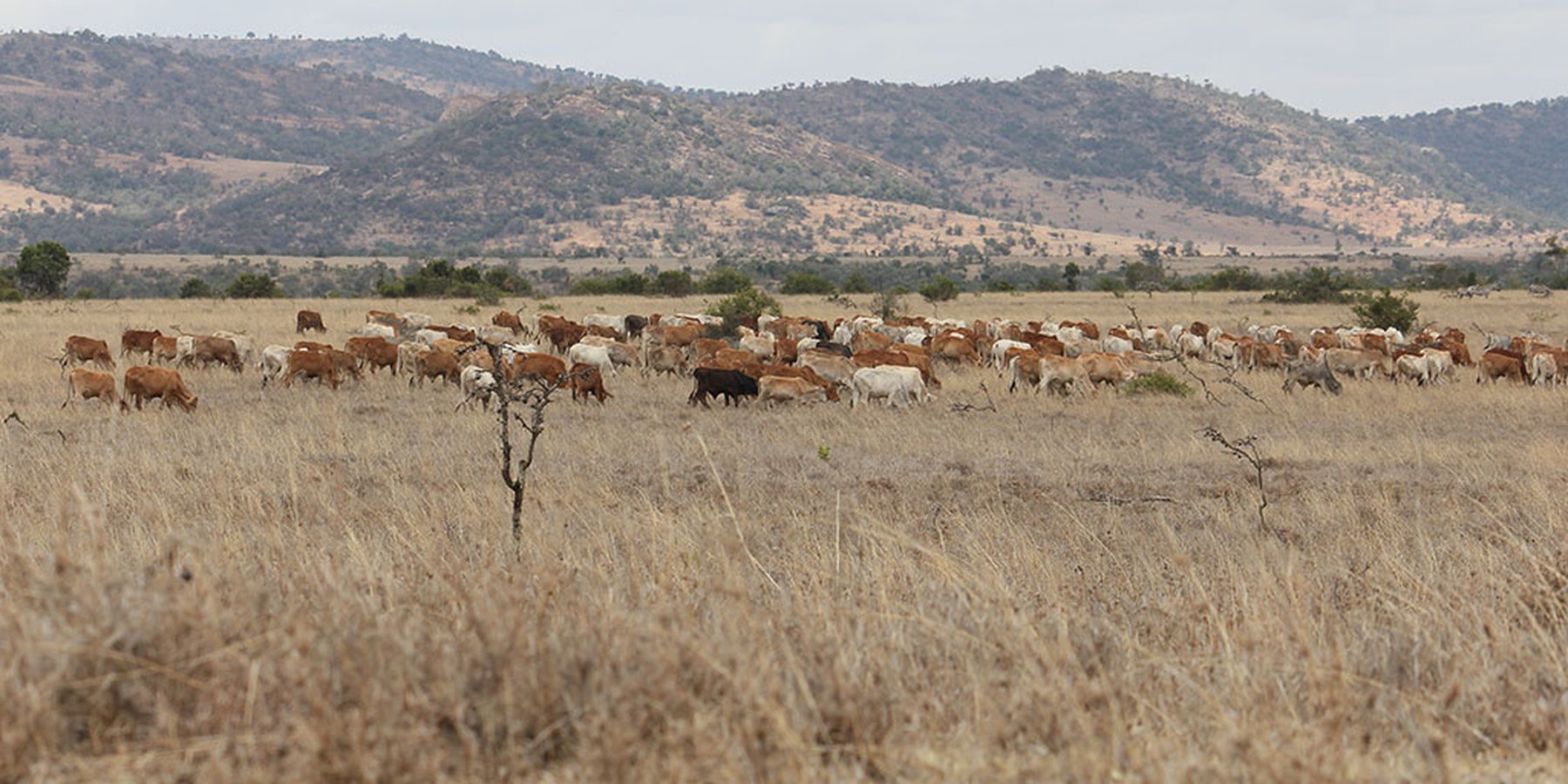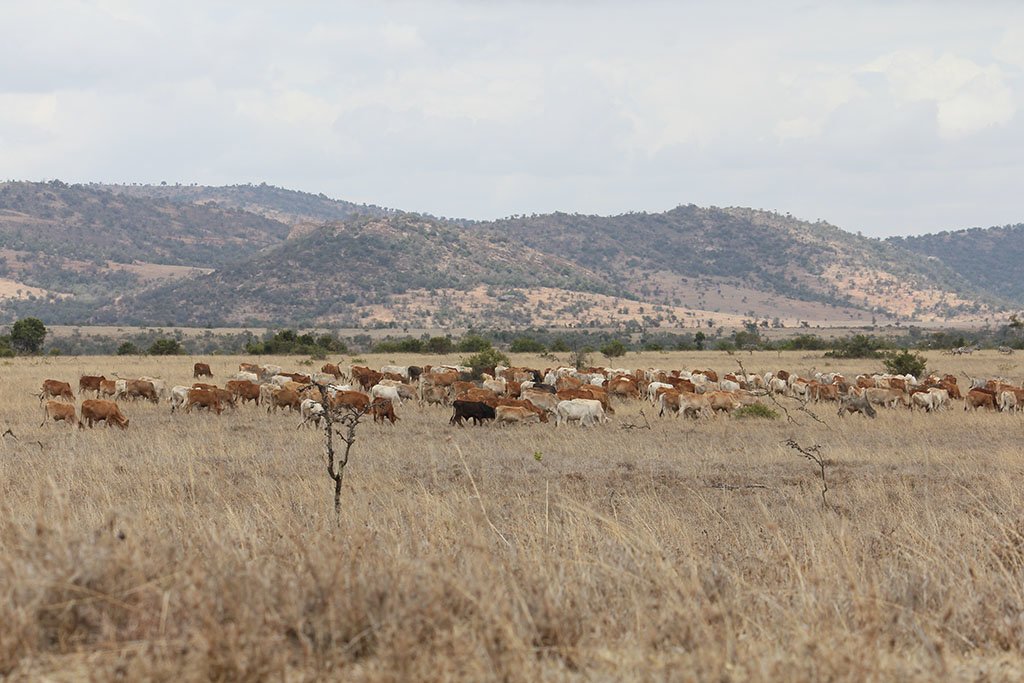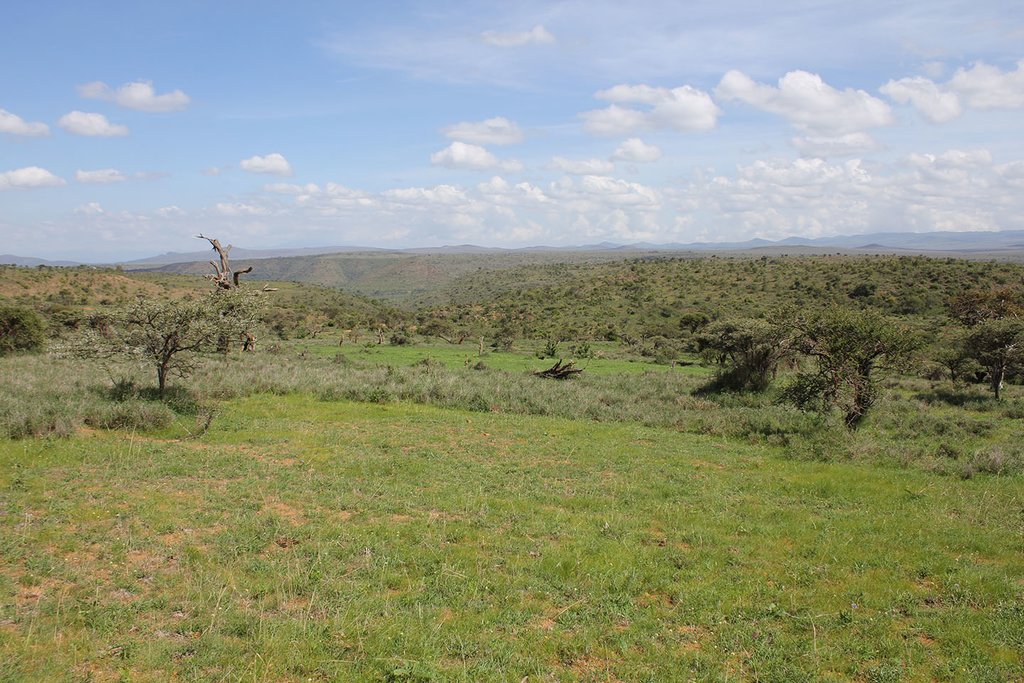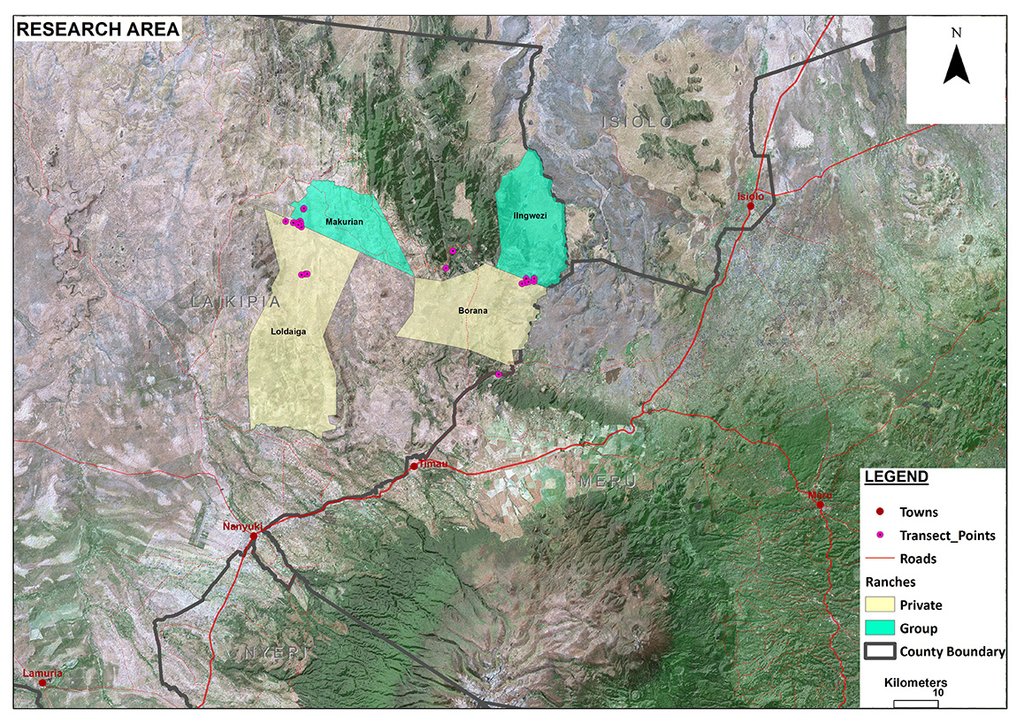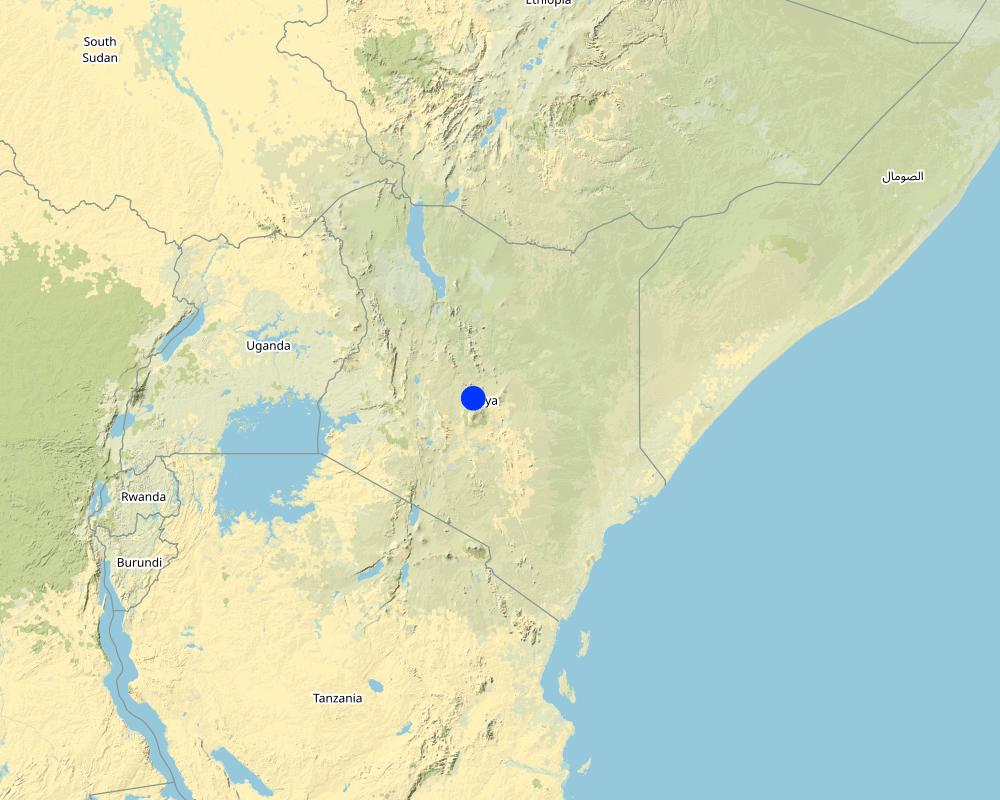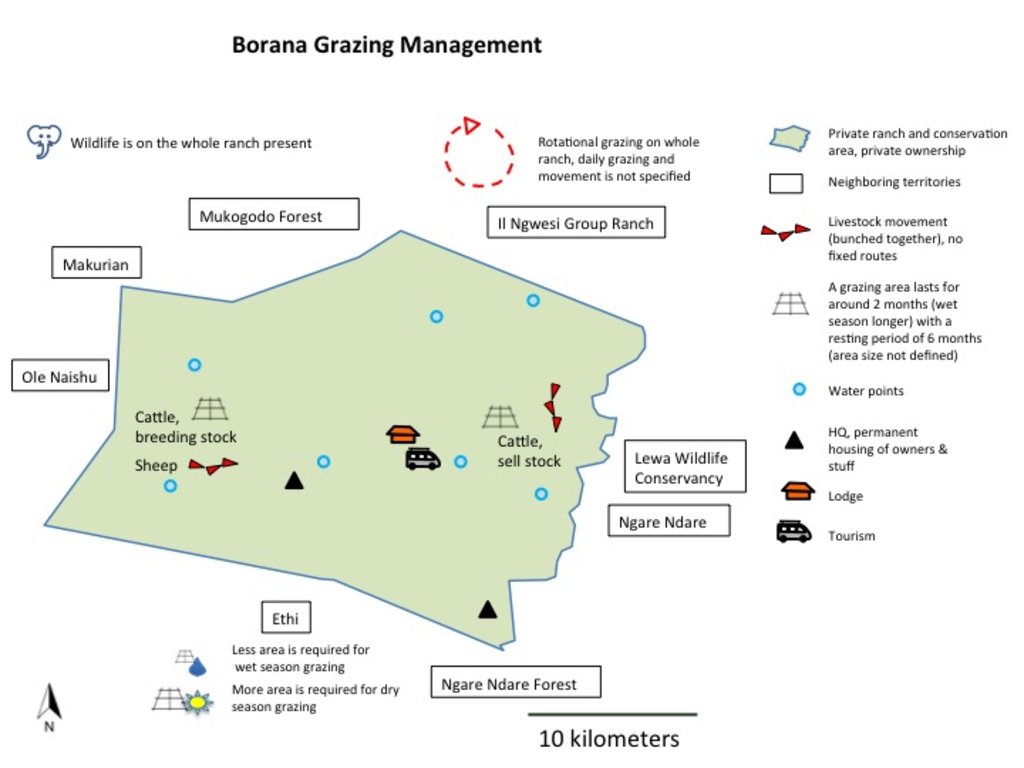Borana Ranch Grazing with Holistic Management Principles [Kenya]
- Création :
- Mise à jour :
- Compilateur : Michael Herger
- Rédacteur : –
- Examinateurs : Alexandra Gavilano, Rima Mekdaschi Studer, Hanspeter Liniger, Donia Mühlematter, Joana Eichenberger
technologies_2972 - Kenya
- Résumé complet en PDF
- Résumé complet en PDF pour impression
- Résumé complet dans le navigateur
- Résumé complet (non formaté)
- Borana Ranch Grazing with Holistic Management Principles: 3 septembre 2018 (inactive)
- Borana Ranch Grazing with Holistic Management Principles: 6 mai 2019 (inactive)
- Borana Ranch Grazing with Holistic Management Principles: 2 novembre 2021 (public)
- Borana Ranch Grazing with Holistic Management Principles: 22 février 2018 (inactive)
- Borana Ranch Grazing with Holistic Management Principles: 1 février 2018 (inactive)
Voir les sections
Développer tout Réduire tout1. Informations générales
1.2 Coordonnées des personnes-ressources et des institutions impliquées dans l'évaluation et la documentation de la Technologie
Personne(s)-ressource(s) clé(s)
exploitant des terres:
Sora Abdi
Borana Ranch ltd. and Borana Conservancy ltd.
Kenya
Nom du projet qui a facilité la documentation/ l'évaluation de la Technologie (si pertinent)
Book project: Guidelines to Rangeland Management in Sub-Saharan Africa (Rangeland Management)1.3 Conditions relatives à l'utilisation par WOCAT des données documentées
Le compilateur et la(les) personne(s) ressource(s) acceptent les conditions relatives à l'utilisation par WOCAT des données documentées:
Oui
1.4 Déclaration sur la durabilité de la Technologie décrite
Est-ce que la Technologie décrite ici pose problème par rapport à la dégradation des terres, de telle sorte qu'elle ne peut pas être déclarée comme étant une technologie de gestion durable des terres?
Non
2. Description de la Technologie de GDT
2.1 Courte description de la Technologie
Définition de la Technologie:
Borana is a private ranch which combines livestock production with conservation and tourism. "Holistic Management" is applied as a principle for livestock on semi-arid lands with limited water resources. Grazing comprises “bunching” and rotational movement of all animals in herds.
2.2 Description détaillée de la Technologie
Description:
Livestock production on Borana ranch is carried out under extensive grazing for beef, dairy, and sheep production. There is strategic fattening and offtake for sales in harmony with conservation principles. The Borana Conservancy is a non-profit organisation, also belonging to the ranch – on the same land - dedicated to the sustainable conservation of critical habitat and wildlife. Ranching contributes financially to the running of the conservancy.
“Holistic Management” (HM) as described by Allan Savory (1988) and promoted by Laikipia Wildlife Forum in Laikipia, is a method that integrates decision-making, planning, and livestock keeping. On the land, this means bunching of all livestock close together in order to act as a "plough" and break the soil to help incorporate seeds and nutrients. Water also infiltrates better. The aim is to improve plant growth and thus soil. Furthermore, it means moving the animals together from block to block, by planned rotational grazing with resting periods. HM aims at managing high numbers of livestock and simultaneously restoring degraded land. However, Holistic Management principles remain controversial.
Livestock herders employed by Borana move different herds of animals rotationally from one grazing area to the next. A defined grazing area lasts for around two months, with a resting period of six months. However, the grazing area and period vary a lot depending on rainfall. During the wet season, livestock usually spend more than two months within the same block. Cattle herds are split depending on their function as offtake for sales, or as breeding stock. The selling stock is located on the eastern side of Borana (currently 600 Head of cattle), while the breeding stock is on the western side (currently 1,800 Head of cattle). Sheep are grazed on the western side too (currently 1,200 Head of cattle).
A calf stays with its mother until it is about six months old. Then a few males are selected as bulls, and all others castrated. At the same time females are selected for breeding to rebuild stock. Only one bull was purchased from outside, in 2013 which was a rare exception.
Livestock are sold to butchers in local centres (e.g. Nanyuki, about 50 km distance), in the capital Nairobi (about 300 km away), and to the son of the owner, who runs a business nearby. Usually, only old and disabled cows are selected for selling.
Borana helps neighbouring group ranches with improved genetics - and access to their land for fattening purpose. It also acts as a grass bank during droughts. According to Borana management, boundaries between Borana and community ranches, which once clearly defined the difference between managed and over-grazed lands, are becoming less clear.
Typical of private ranches in Laikipia, Borana supports some of the highest densities of wildlife in Kenya. The wild herbivore biomass density on private ranches is estimated by Georgiadis (2007) at 14 ha /TLU.
2.3 Photos de la Technologie
2.5 Pays/ région/ lieux où la Technologie a été appliquée et qui sont couverts par cette évaluation
Pays:
Kenya
Région/ Etat/ Province:
Laikipia
Autres spécifications du lieu:
Mukogodo District
Spécifiez la diffusion de la Technologie:
- répartie uniformément sur une zone
S'il n'existe pas d'informations exactes sur la superficie, indiquez les limites approximatives de la zone couverte:
- 100-1 000 km2
Map
×2.6 Date de mise en œuvre de la Technologie
Indiquez l'année de mise en œuvre:
2008
2.7 Introduction de la Technologie
Spécifiez comment la Technologie a été introduite: :
- par le biais de projets/ d'interventions extérieures
Commentaires (type de projet, etc.) :
Holistic Management approach by Allan Savory.
In Laikipia, it was introduced by Richard Hartfield, Laikipia Wildlife Forum and funded by Laikipia Wildlife Forum (LWF), Lewa Conservancy and Northern Rangeland Trust (NRT). Borana beared costs themselves.
3. Classification de la Technologie de GDT
3.1 Principal(aux) objectif(s) de la Technologie
- améliorer la production
- réduire, prévenir, restaurer les terres dégradées
- préserver l'écosystème
- conserver/ améliorer la biodiversité
3.2 Type(s) actuel(s) d'utilisation des terres, là où la Technologie est appliquée

Pâturages
Pâturage extensif:
- Ranching
Type d'animal:
- bétail - laitier
- bétail - bovins à viande
- volailles
- ovins
- porcine
Produits et services:
- viande
- lait
Espèces:
ovins
Nombre:
1000

Implantations, infrastructures
- Habitats, buildings
Remarques:
Lodge for Tourism.
Headquarter.
Commentaires:
Main animal species and products: Livestock: Cattle, sheep, chicken, pigs. Milk, beef and sheep production (a few chicken and pigs). Some organic farming (herbs, vegetables). Local (30%), national and partly international distribution (both 70%). Livestock: 1,780 TLU; Stocking rate: 7.3 ha/TLU Pressure on land including wildlife: 4.8 ha/TLU Livestock numbers: 2,400 cattle, 1,000 sheep Sales: Cattle 10% sales, Sheep 25%. Assisting community grazing: 500-1,000 Head of cattle during droughts until it rains. Wildlife: giraffe, antelope/gazelle (e.g. gerenuk, eland, waterbuck, impala, Thomson's gazelle), baboon, zebra, dikdik, hare, rhino, elephant, predators and others. There is more wildlife than on group ranches.
Number of growing seasons per year: 2
Short rains in November and December. Long rains in April and May. Rains from (October) November to December are usually better in this area. Rainfalls with strong local variations and changing regimes.
Livestock density: Livestock: 1780 TLU; Stocking rate: 7.3 ha/TLU livestock but overall pressure on land including wildlife: 4.8 ha/TLU
3.4 Approvisionnement en eau
Approvisionnement en eau des terres sur lesquelles est appliquée la Technologie:
- pluvial
3.5 Groupe de GDT auquel appartient la Technologie
- pastoralisme et gestion des pâturages
- Amélioration de la couverture végétale/ du sol
3.6 Mesures de GDT constituant la Technologie

modes de gestion
- M2: Changement du niveau de gestion / d'intensification
- M4: Changement majeur dans le calendrier des activités
3.7 Principaux types de dégradation des terres traités par la Technologie

érosion hydrique des sols
- Wt: perte de la couche superficielle des sols (couche arable)/ érosion de surface
- Wg: ravinement/ érosion en ravines

érosion éolienne des sols
- Et: perte de la couche superficielle des sols (couche arable)

dégradation physique des sols
- Pc: compaction
- Pk: scellage et encroûtement
- Pi: imperméabilisation des sols

dégradation biologique
- Bc: réduction de la couverture végétale
- Bh: perte d’habitats
- Bq: baisse de la quantité/ biomasse
- Bs: baisse de la qualité et de la composition/ diversité des espèces
- Bl: perte de la vie des sols
Commentaires:
Across the grasslands and rangelands, an increase in bare land and bush has been a clear trend all over Laikipia for many years, both on community-owned lands and private ranches. Major identified ecological problems (partly) caused by livestock production are: bare ground, low contents of soil organic carbon and plant-available nutrients, soil erosion (sealing, crusting, rills and gullies, water flow patterns, sheet erosion, pedestals), poor soil properties, undesirable species, and (increasing) woody and invasive species. The technology aims at improving vegetation cover of the land and thereby reducing further degradation and restoring degraded land. Borana is clearly not as much affected by the degradation of the land (compare Herger 2018), however, they use and support ranching with Holistic Management as a tool to enhance the quality of the grazing and prevent degradation. According to Borana management, cattle grazing reduces the moribund grass biomass, promotes seed dispersal, increases the nutritional value of the grass, and decreases the risk of bush fires. Even more crucial: The introduction of planned grazing (as Holistic Management) to Group Ranches in the area prevents conflicts (e.g. invading of private ranches), livestock diseases and deaths.
3.8 Prévention, réduction de la dégradation ou réhabilitation des terres dégradées
Spécifiez l'objectif de la Technologie au regard de la dégradation des terres:
- prévenir la dégradation des terres
- réduire la dégradation des terres
4. Spécifications techniques, activités, intrants et coûts de mise en œuvre
4.1 Dessin technique de la Technologie
4.2 Informations générales sur le calcul des intrants et des coûts
Spécifiez la manière dont les coûts et les intrants ont été calculés:
- par entité de la Technologie
Précisez l'unité:
Only livestock production related; for the whole farm: Herders, animals treatment
Indiquez la monnaie utilisée pour le calcul des coûts:
- dollars américains
Indiquez le coût salarial moyen de la main d'œuvre par jour:
4
4.3 Activités de mise en place/ d'établissement
| Activité | Calendrier des activités (saisonnier) | |
|---|---|---|
| 1. | Training of employees | |
| 2. | Grazing planning |
4.4 Coûts et intrants nécessaires à la mise en place
Commentaires:
No figures on this, costs for implementation are estimated low, because ranching with the former grazing system was not that different before.
4.5 Activités d'entretien/ récurrentes
| Activité | Calendrier/ fréquence | |
|---|---|---|
| 1. | Herders, supervisors, watchmen etc | |
| 2. | Animal treatments (vaccination, spraying, injections) |
4.6 Coûts et intrants nécessaires aux activités d'entretien/ récurrentes (par an)
| Spécifiez les intrants | Unité | Quantité | Coûts par unité | Coût total par intrant | % du coût supporté par les exploitants des terres | |
|---|---|---|---|---|---|---|
| Main d'œuvre | Herders/employees | Person*days | 16200,0 | 4,0 | 64800,0 | 100,0 |
| Main d'œuvre | Insurance | Unknown quantity | 1,0 | 3900,0 | 3900,0 | |
| Equipements | Vehicle | Unknown quantity | 1,0 | 3700,0 | 3700,0 | |
| Autre | Animals treatments | Per TLU | 1780,0 | 11,0 | 19580,0 | |
| Coût total d'entretien de la Technologie | 91980,0 | |||||
| Coût total d'entretien de la Technologie en dollars américains (USD) | 91980,0 | |||||
4.7 Facteurs les plus importants affectant les coûts
Décrivez les facteurs les plus importants affectant les coûts :
Labor
5. Environnement naturel et humain
5.1 Climat
Précipitations annuelles
- < 250 mm
- 251-500 mm
- 501-750 mm
- 751-1000 mm
- 1001-1500 mm
- 1501-2000 mm
- 2001-3000 mm
- 3001-4000 mm
- > 4000 mm
Spécifiez la pluviométrie moyenne annuelle (si connue), en mm:
497,00
Spécifications/ commentaires sur les précipitations:
Rainfall gauge Borana HQ average from 2013-2016. Strong local (and temporal) variation, changing rainfall regimes.
Indiquez le nom de la station météorologique de référence considérée:
Rainfall gauge Borana HQ
Zone agro-climatique
- semi-aride
5.2 Topographie
Pentes moyennes:
- plat (0-2 %)
- faible (3-5%)
- modéré (6-10%)
- onduleux (11-15%)
- vallonné (16-30%)
- raide (31-60%)
- très raide (>60%)
Reliefs:
- plateaux/ plaines
- crêtes
- flancs/ pentes de montagne
- flancs/ pentes de colline
- piémonts/ glacis (bas de pente)
- fonds de vallée/bas-fonds
Zones altitudinales:
- 0-100 m
- 101-500 m
- 501-1000 m
- 1001-1500 m
- 1501-2000 m
- 2001-2500 m
- 2501-3000 m
- 3001-4000 m
- > 4000 m
Indiquez si la Technologie est spécifiquement appliquée dans des:
- non pertinent
5.3 Sols
Profondeur moyenne du sol:
- très superficiel (0-20 cm)
- superficiel (21-50 cm)
- modérément profond (51-80 cm)
- profond (81-120 cm)
- très profond (>120 cm)
Texture du sol (de la couche arable):
- grossier/ léger (sablonneux)
- moyen (limoneux)
Texture du sol (> 20 cm sous la surface):
- grossier/ léger (sablonneux)
- moyen (limoneux)
Matière organique de la couche arable:
- moyen (1-3%)
Si disponible, joignez une description complète du sol ou précisez les informations disponibles, par ex., type de sol, pH/ acidité du sol, capacité d'échange cationique, azote, salinité, etc.
Red and brown sandy soils. Black cotton soil. Luvisol, Regosol, Vertisol
SOC 2 %
pH: 6.4
Clay: 8%
Silt: 53%
Sand: 39%
Further data on rangeland health compare Herger (2018)
5.4 Disponibilité et qualité de l'eau
Profondeur estimée de l’eau dans le sol:
> 50 m
Disponibilité de l’eau de surface:
moyenne
Qualité de l’eau (non traitée):
faiblement potable (traitement nécessaire)
La salinité de l'eau est-elle un problème? :
Non
La zone est-elle inondée?
Non
Commentaires et précisions supplémentaires sur la qualité et la quantité d'eau:
Waterpoints provided by waterpipes (sometimes destroyed by elephants)
5.5 Biodiversité
Diversité des espèces:
- élevé
Diversité des habitats:
- élevé
Commentaires et précisions supplémentaires sur la biodiversité:
Grassed acacia bushland. Little bare ground. Dominant grasses: Eragrostis species, Cynadon species, Hyparrhenia species, Kelenger species. Dominant shrubs: Grewia tembensis, Hibiscus aponeurus, Rhus natalensis, Scutia myrtina. Dominant trees: Acacia tortilis, Acacia mellifera, Euclea divinorum, Boscia angustifolia. Detailed list of all species (also wildlife) available (Herger 2018)
5.6 Caractéristiques des exploitants des terres appliquant la Technologie
Sédentaire ou nomade:
- Sédentaire
Orientation du système de production:
- commercial/ de marché
Revenus hors exploitation:
- 10-50% de tous les revenus
Niveau relatif de richesse:
- très riche
Individus ou groupes:
- individu/ ménage
Niveau de mécanisation:
- travail manuel
Genre:
- femmes
- hommes
Age des exploitants des terres:
- personnes d'âge moyen
5.7 Superficie moyenne des terres utilisées par les exploitants des terres appliquant la Technologie
- < 0,5 ha
- 0,5-1 ha
- 1-2 ha
- 2-5 ha
- 5-15 ha
- 15-50 ha
- 50-100 ha
- 100-500 ha
- 500-1 000 ha
- 1 000-10 000 ha
- > 10 000 ha
Cette superficie est-elle considérée comme de petite, moyenne ou grande dimension (en se référant au contexte local)?
- grande dimension
5.8 Propriété foncière, droits d’utilisation des terres et de l'eau
Propriété foncière:
- individu, avec titre de propriété
Droits d’utilisation des terres:
- individuel
Droits d’utilisation de l’eau:
- individuel
Commentaires:
Masai in the area have claimed that land leases of white settlers have expired and the land belongs to them. Government states the land belongs to the private ranchers, but the future development is unknown. There have already been conflicts and are likely to happen again. On the other hand, cooperation with group ranches has increased.
5.9 Accès aux services et aux infrastructures
santé:
- pauvre
- modéré
- bonne
éducation:
- pauvre
- modéré
- bonne
assistance technique:
- pauvre
- modéré
- bonne
emploi (par ex. hors exploitation):
- pauvre
- modéré
- bonne
marchés:
- pauvre
- modéré
- bonne
énergie:
- pauvre
- modéré
- bonne
routes et transports:
- pauvre
- modéré
- bonne
eau potable et assainissement:
- pauvre
- modéré
- bonne
services financiers:
- pauvre
- modéré
- bonne
6. Impacts et conclusions
6.1 Impacts sur site que la Technologie a montrés
Impacts socio-économiques
Production
production fourragère
Commentaires/ spécifiez:
Quality of pasture
production animale
Commentaires/ spécifiez:
Better quality of animals
gestion des terres
Disponibilité et qualité de l'eau
disponibilité de l'eau pour l'élevage
qualité de l'eau pour l'élevage
Revenus et coûts
charge de travail
Impacts socioculturels
droits d'utilisation des terres/ de l'eau
Commentaires/ spécifiez:
Cooperation with Group Ranches
connaissances sur la GDT/ dégradation des terres
apaisement des conflits
Commentaires/ spécifiez:
Good: Cooperation with Group Ranches. But still danger of invaders. Good pasture attracts herders in distress (e.g. pastoralists from further north)
Impacts écologiques
Cycle de l'eau/ ruissellement
quantité d'eau
qualité de l'eau
ruissellement de surface
évaporation
Sols
humidité du sol
couverture du sol
perte en sol
matière organique du sol/ au dessous du sol C
Biodiversité: végétale, animale
Couverture végétale
biomasse/ au dessus du sol C
diversité végétale
diversité animale
diversité des habitats
Réduction des risques de catastrophe et des risques climatiques
impacts de la sécheresse
6.4 Analyse coûts-bénéfices
Quels sont les bénéfices comparativement aux coûts de mise en place (du point de vue des exploitants des terres)?
Rentabilité à court terme:
neutre / équilibrée
Rentabilité à long terme:
positive
Quels sont les bénéfices comparativement aux coûts d'entretien récurrents (du point de vue des exploitants des terres)?
Rentabilité à court terme:
positive
Rentabilité à long terme:
positive
6.5 Adoption de la Technologie
- 11-50%
De tous ceux qui ont adopté la Technologie, combien d'entre eux l'ont fait spontanément, à savoir sans recevoir aucune incitation matérielle, ou aucune rémunération? :
- 11-50%
6.6 Adaptation
La Technologie a-t-elle été récemment modifiée pour s'adapter à l'évolution des conditions?
Non
6.7 Points forts/ avantages/ possibilités de la Technologie
| Points forts/ avantages/ possibilités du point de vue de l'exploitant des terres |
|---|
| Method leaves grass time to grow/rest |
| One can manage resources properly (water and pasture) |
| To keep all animals in one place makes vaccinations /disease prevention easier |
| “Ploughing effect” by the concentrated / bunched animals in one herd (new grass stimulated) |
| Tick population kept under control |
| In general for the whole area if many Group Ranches implement Holistic Management: More secure financial future and less stress during times of drought for pastoralists’ livestock. For Borana, this means less pressure from surrounding pastoralists when pasture is scarce. |
| Enhance the quality of grazing. Cattle grazing reduces the moribund grass biomass, promotes seed dispersal, increases the nutritional value of the grass and decreases the risk of bush fires. |
| Points forts/ avantages/ possibilités du point de vue du compilateur ou d'une autre personne ressource clé |
|---|
| The listed advantages from Abdi Sora, land user, are for the most part shared by the compiler's view. Regarding Holistic Management (HM) principles and land recovery there remain some uncertainties. On the one hand it is generally questionable to state as in HM that: “the more animals the better” (as long as they are managed properly they can even recover degraded land), but this seems dangerous in areas with such high livestock numbers and cultural value of livestock keeping - without scientific proof of the principles in similar ecological conditions. Since Borana has relatively low stocking rates and good management the rangeland is in good condition anyway. The effects of Holistic Management principles on their own are difficult to estimate. |
6.8 Faiblesses/ inconvénients/ risques de la Technologie et moyens de les surmonter
| Faiblesses/ inconvénients/ risques du point de vue de l’exploitant des terres | Comment peuvent-ils être surmontés? |
|---|---|
| More work (a lot of supervision, monitoring etc) | |
| More costs (a lot of supervision, monitoring etc) | |
| Danger of disease outbreak in a big herd |
7. Références et liens
7.1 Méthodes/ sources d'information
- visites de terrain, enquêtes sur le terrain
4 field visits with included "rangeland health assessment" in different parts of Borana (mainly next to gate to Il Ngwesi) where I could see the condition of the land as well as several other visits of the area.
- interviews/entretiens avec les exploitants des terres
Several meetings with the general manager and a short meeting with the owner of the ranch.
- interviews/ entretiens avec les spécialistes/ experts de GDT
Truman Young
Dan Rubenstein
Dino Martins
John Letai
Samali Letai
Peter Hetz
Dominic Maringa
Joseph Putunoi
Patrick Ekodere
- compilation à partir de rapports et d'autres documents existants
Scientific papers, LWF reports etc.
Quand les données ont-elles été compilées (sur le terrain)?
22/01/2017
7.2 Références des publications disponibles
Titre, auteur, année, ISBN:
Georgiadis, N.J., Olivero, I.N., Romanach, S.S. (2007). Savanna herbivore dynamics in a livestock-dominated landscape: I. Dependence on land use, rainfall, density, and time. Biology Conservation 137(3): 461-472.
Disponible à partir d'où? Coût?
Online
Titre, auteur, année, ISBN:
Herger, M.B. (2018). Environmental Impacts of Red Meat Production. MSc Thesis. University of Bern.
Disponible à partir d'où? Coût?
University of Bern
Titre, auteur, année, ISBN:
Savory, A (1988). Holistic Resource Management. Gilmour Publishing, Harare, Zimbabwe
Disponible à partir d'où? Coût?
Online
Titre, auteur, année, ISBN:
•Carter, J., Jones, A., O’Brien, M., Ratner, J., Wuerthner, G. (2014). Holistic Management: Misinformation on the Science of Grazed Ecosystems.
Disponible à partir d'où? Coût?
International Journal of Biodiversity.
Titre, auteur, année, ISBN:
•Briske, D.D., Ash, A.J., Derner, J.D., Huntsinger, L. (2014). Commentary: A critical assessment of the policy endorsement for holistic management. Agricultural Systems 125:50-53.
Liens et modules
Développer tout Réduire toutLiens
Aucun lien
Modules
Aucun module trouvé


